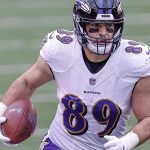Golf, a sport steeped in tradition, has its own unique lexicon, and one term that often piques curiosity is the “pole.”
Commonly known as the flagstick, the pole plays a crucial role in guiding players toward the hole. Strategically placed in the center of the cup on the green, it serves as a visual target for golfers aiming to sink their putts.
Understanding the pole’s significance can enhance both the strategy and enjoyment of the game. It not only helps players gauge distance but also offers a point of reference during approach shots.
Whether you’re a novice or a seasoned pro, mastering the use of the pole can significantly impact your performance on the course.
Understanding the Role of Poles in Golf
Types of Poles Used in Golf
Golf courses feature various types of poles, each serving a distinct purpose.
- Flagstick: Positioned in the center of the hole, the flagstick helps players locate the hole from a distance. It can be removed or left in during putts, depending on player preference and strategy.
- Boundary Posts: These poles mark out-of-bounds areas on the course. Hitting beyond these boundaries results in penalties according to the rules.
- Fairway Poles: Sometimes used to indicate the centerline of a fairway or to mark distances to the green, these poles assist players in aligning their shots accurately.
- Hazard Markers: Poles marked with colors indicate water hazards or bunkers. Red poles mark lateral water hazards, while yellow poles indicate water hazards that cross the fairway.
Significance of Poles During Play
Poles play a critical role in guiding players and maintaining the flow of the game.
- Guiding Putts: The flagstick can help players gauge the distance and break of their putts. However, studies, like those by Tom Mase at California Polytechnic State University, suggest that keeping the pin in might prevent some breaking putts from entering the hole. His research with the Perfect Putter demonstrated these nuances, which can influence players’ decisions.
- Rule Interpretations: When a ball hits an artificial obstruction like a power pole, the interpretation of the rules can affect the outcome. For instance, in Norway, such incidents might not incur a penalty, whereas other regions might have different rulings. Clear understanding of local rules is essential.
- Aiding Visual Alignment: Boundary posts and fairway poles assist players in aligning their shots effectively. They provide visual markers that help in strategic planning and execution of strokes.
- Indicating Hazards: Hazard markers alert players to potential risks. Recognizing and navigating hazards efficiently reduces penalty strokes and improves overall performance.
Understanding these poles’ roles enhances a player’s strategic approach, leading to better decision-making on the course.
Key Rules Regarding Golf Poles
The term “golf poles” is likely a reference to flagsticks or poles used on the golf course. The rules regarding flagsticks are outlined in the Rules of Golf, which are governed by the USGA and R&A. Here are the key rules:
How Poles Impact Golf Rules?
Poles and other markers on a golf course significantly impact the game and are governed by specific rules. Here’s an overview of how different types of poles affect play according to the USGA rules:
1. Boundary Poles
- Definition: These poles or posts mark the boundaries of the golf course, indicating out-of-bounds areas.
- Impact: If a ball goes out of bounds, identified by crossing the line between boundary poles, the player incurs a stroke-and-distance penalty. The player must replay the shot from the original position with an additional stroke added to the score.
2. Hazard Markers
- Definition: Poles or stakes used to mark water hazards (yellow stakes) and lateral water hazards (red stakes).
- Impact: When a ball enters a hazard:
- Yellow Stakes: The player can either play the ball as it lies or take a penalty drop, incurring one stroke. The drop can be taken behind the hazard, keeping the point where the ball last crossed the margin of the hazard directly between the hole and the drop area.
- Red Stakes: The player has additional options to drop within two club-lengths from where the ball last crossed the hazard margin or at a point equidistant from the hole on the opposite margin of the hazard, both options incurring a one-stroke penalty.
3. Immovable Obstructions
- Definition: These include artificial objects like power poles, sprinkler heads, and cart paths.
- Impact: According to Rule 16.1, players are entitled to free relief from immovable obstructions if they interfere with the player’s stance, swing, or lie of the ball. Relief is taken by dropping the ball within one club-length of the nearest point of complete relief, no closer to the hole.
4. Movable Obstructions
- Definition: These include objects like rakes and moveable signs.
- Impact: Players can move these obstructions without penalty. If a ball moves as a direct result of moving a movable obstruction, it must be replaced without penalty.
5. Temporary Immovable Obstructions (TIO)
- Definition: Objects such as tents or scoreboards that are temporarily placed on the course.
- Impact: Players may take relief if a TIO interferes with their stance, swing, or intended line of play. Relief procedures vary but generally involve dropping the ball within one club-length of the nearest point of complete relief, no closer to the hole.
6. Ricochets
Impact: When a ball ricochets off an obstruction like a pole, the player must play the ball as it lies without penalty, unless it is in a hazard or out of bounds.
Common Misunderstandings About Poles
- Assuming Automatic Penalties for Hitting Artificial Poles
- Believing Relief is Always Granted for Poles
- Boundary Poles Confusion
- Incorrectly Handling Ricochets
- Misidentifying Temporary Obstructions
Choosing the Right Pole for Your Game
Choosing the right pole for your golf game involves considering various factors to enhance your performance and enjoyment on the course. Here’s a guide to help you select the most suitable poles:
Factors to Consider When Selecting Golf Poles
Selecting the appropriate golf poles is crucial for maintaining course standards and ensuring player safety and guidance. Several factors must be considered to choose the most suitable poles for different purposes:
- Purpose of the Pole:
- Boundary Poles: Define the edges of the golf course to prevent players from inadvertently leaving the course area.
- Hazard Markers: Indicate potential dangers such as water bodies, sand traps, or rough terrain to help players avoid or navigate these areas effectively.
- Fairway Alignment Aids: Assist players in aligning their shots towards the fairway, improving accuracy and game flow.
- Material Choice:
- Wood: Traditional and aesthetically pleasing but prone to faster degradation from weather and environmental conditions.
- Metal: Offers superior durability and longevity but may blend into the surroundings if not properly painted or marked.
- High-Grade Plastic: Balances durability and visibility, often designed to withstand various weather conditions without significant wear and tear.
- Height and Visibility:
- Height: Taller poles are more easily seen from a distance, crucial for both boundary marking and hazard indication.
- Color: Bright colors such as red, yellow, or orange are recommended to stand out against the natural background of the golf course.
- Reflective Coatings: Enhance visibility during low-light conditions, such as early morning or evening play, ensuring that the poles are easily noticed.
- Weather Resistance:
- Poles should be chosen based on their ability to withstand different weather conditions, including rain, wind, and sun exposure. This ensures that they remain functional and visible throughout the year.
Tips for Maintaining Your Golf Poles
Proper maintenance is essential for extending the life and functionality of golf poles, ensuring they provide reliable performance and maintain safety standards on the course. Here are some key tips for maintaining your golf poles:
Regular Inspections
Conduct routine checks to identify any signs of wear, damage, or instability. Promptly replace damaged poles to maintain safety and compliance with course regulations.
Cleaning
Periodically clean the poles to remove dirt, grime, and other debris. Use mild soap and water for cleaning, and avoid harsh chemicals that can degrade the pole material. Ensure that reflective coatings and bright colors are kept clear of dirt to maintain visibility.
Securing Poles
Ensure poles are firmly secured in the ground to prevent displacement during severe weather. Regularly inspect anchor points to ensure they are stable and secure. Consider reinforcing the base with concrete or other durable materials for enhanced stability.
Off-Season Storage:
Store poles in a dry, covered area during off-seasons to shield them from moisture and UV rays. Proper storage can prevent material degradation and extend their lifespan.
Frequently Asked Questions
What is the role of poles in golf?
Poles such as boundary posts and hazard markers assist golfers in estimating distances and aligning shots correctly. They also play a crucial role in adhering to golf rules as set by the USGA.
How do poles impact the rules of golf?
Poles indicate boundaries and hazards. Misinterpreting these markers can result in penalties. Understanding USGA guidelines helps players avoid such penalties.
What should a player do if a pole interferes with their play?
If a pole interferes, players should follow relief procedures defined by the USGA. Familiarizing oneself with these rules can help in executing a precise relief without penalties.
How can golfers avoid pole-related penalties?
To avoid penalties, golfers should carefully identify pole locations and understand the specific rules associated with them. Regularly updating themselves on rule changes also helps in maintaining compliance.
Conclusion
Mastering the knowledge of poles in golf can significantly enhance a player’s performance and compliance with the rules.
By understanding the role of boundary posts and hazard markers, golfers can better navigate the course and avoid unnecessary penalties.
Staying updated with USGA guidelines and adapting strategies accordingly ensures fair play and improved gameplay.
Identifying pole locations and knowing how to handle interference effectively can make a substantial difference in a golfer’s overall experience.
Embracing these insights will not only improve one’s game but also uphold the integrity of the sport.








Colin McCarthy